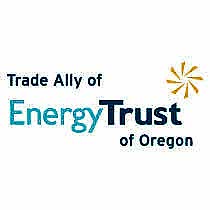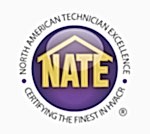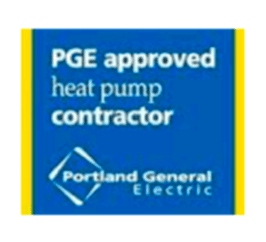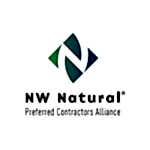Originally Published: June 1st, 2015
Last Updated April 7th, 2021
Heating and cooling are two of the most important concepts of homeownership. In fact, heating and cooling systems are major factors for those looking to purchase homes and are a critical part of living comfortably in a home.
You may frequently hear the term “HVAC,” which is used to describe home heating and cooling systems. The acronym stands for Heating, Ventilation, and Air Conditioning–which are the three primary functions of a home system. They control air temperature and humidity and maintain the quality of the air in the home.
Central Systems
Heating and cooling systems may be classified as central or local. Central heating and cooling systems are the standards for most buildings because they can efficiently control the temperature in several spaces at once. They produce warm or cool air from a central local location then distribute it throughout the home. There are many types of systems that work as central systems, from traditional split systems to packaged product systems.
Products typically used in central heating and cooling systems include:
- Heat Pumps
- Air Conditioners
- Gas and Oil Furnaces
- Fan Coils
- Evaporator Coils
- Single Packaged Products
- Controls and Thermostats
Local heating and cooling systems, such as Room Air Conditioners and Ductless Split Systems, are used for smaller spaces such as a bedroom or home office.
Heating
Heating systems keep your home warm and comfortable. If you live in a particularly cold climate, the function of your heating system is important.
Because most central heating and cooling systems send air through ductwork for distribution, they are classified as forced air systems. The ductwork can contain products that filter or clean the air.
Radiant systems, such as boilers, use components such as radiators to create and deliver heat throughout the home.
Typical heating products include:
- Heat Pumps
- Gas and Oil Furnaces
- Fan Coils
- Boilers
- Single Packaged Product systems
Cooling
Whole-home air conditioning systems are central systems that use ducts to deliver cooled air throughout the home. An air conditioning system provides cooling, ventilation, humidity control, and even heating (if using a heat pump) for a home. Air conditioning units cool homes by delivering refrigerants like Puron, Refrigerant, and Freon to evaporator coils, which dissipate the refrigerant and blow cool air into ducts for delivery throughout the home.
Rather than distributing cool air throughout a home with cooled refrigerant and ductwork, a room air conditioner contains all the components in a single unit and cools one room. Because they blow cool air directly into a small space, room air conditioners are ideal for cooling a room in a home.
Because open windows prevent the control system from effectively maintaining a constant temperature, it is recommended that air-conditioned homes install sealed windows.
Typical air conditioning products include:
- Heat Pumps
- Central Air Conditioners
- Evaporator Coils
- Single Packaged Product systems
Specialty Products—Ductless Split Systems
Ductless split systems do not rely on air ducts to distribute treated air throughout the building, so they are ideal for rooms where adding ducts is impractical, such as a garage or exercise room. They are called split systems because the condensing unit sits outside your home, and the indoor unit sits unobtrusively on the wall to control airflow.
High-wall, under-ceiling, and cassette systems are all mounted in or near the ceiling. This ensures that they seamlessly blend in with any rooms’ décor while providing quiet temperature-controlled comfort. Every system comes with remote controls, enabling users to easily control and alter the building’s temperature.
Typical Ductless Systems:
- High Wall Systems
- Under-Ceiling Systems
- Cassette Systems
Thermostats
A thermostat is any unit that controls the operation of a heating and cooling system. Thermostats are devices that enable you to set your home’s temperature by controlling the heating and cooling systems. Thermostats can also be used to manage the timing of the system’s functions, which can help manage and regulate energy use and costs.
Learn More
Learn more about the many aspects of heating and cooling, including the types of systems available, how to find the ideal system for your home, how health and air quality impact your home, how energy efficiency can save you money, how heating and cooling impacts the environment, and the many terms and phrases of heating and cooling.










